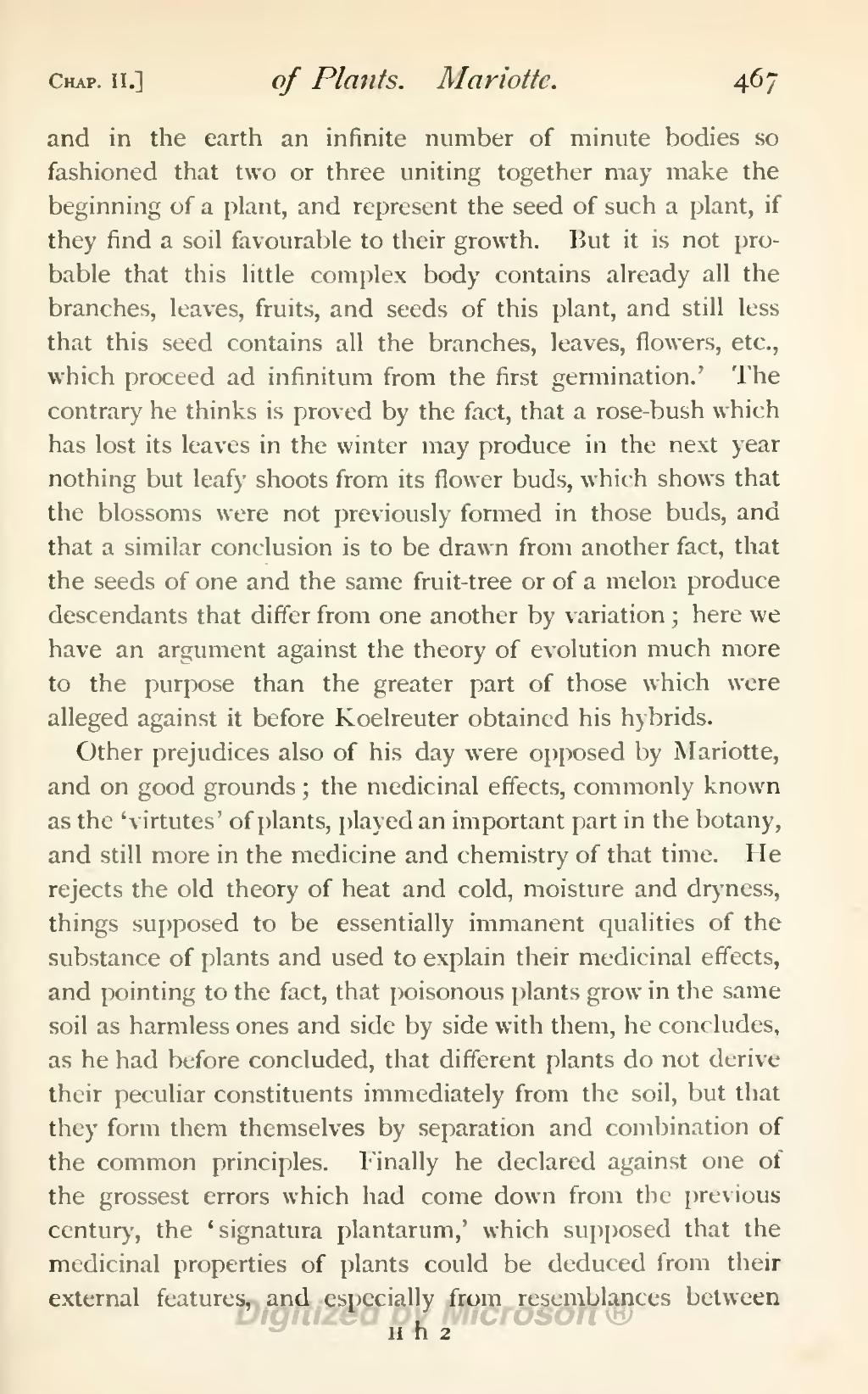and in the earth an infinite number of minute bodies so
fashioned that two or three uniting together may make the
beginning of a plant, and represent the seed of such a plant, if
they find a soil favourable to their growth. But it is not probable that this little complex body contains already all the
branches, leaves, fruits, and seeds of this plant, and still less
that this seed contains all the branches, leaves, flowers, etc.,
which proceed ad infinitum from the first germination.' The
contrary he thinks is proved by the fact, that a rose-bush which
has lost its leaves in the winter may produce in the next year
nothing but leafy shoots from its flower buds, which shows that
the blossoms were not previously formed in those buds, and
that a similar conclusion is to be drawn from another fact, that
the seeds of one and the same fruit-tree or of a melon produce
descendants that differ from one another by variation; here we
have an argument against the theory of evolution much more
to the purpose than the greater part of those which were alleged against it before Koelreuter obtained his hybrids.
Other prejudices also of his day were opposed by Mariotte, and on good grounds; the medicinal effects, commonly known as the 'virtutes' of plants, played an important part in the botany, and still more in the medicine and chemistry of that time. He rejects the old theory of heat and cold, moisture and dryness, things supposed to be essentially immanent qualities of the substance of plants and used to explain their medicinal effects, and pointing to the fact, that poisonous plants grow in the same soil as harmless ones and side by side with them, he concludes, as he had before concluded, that different plants do not derive their peculiar constituents immediately from the soil, but that they form them themselves by separation and combination of the common principles. Finally he declared against one of the grossest errors which had come down from the previous century, the 'signatura plantarum,' which supposed that the medicinal properties of plants could be deduced from their external features, and especially from resemblances between
